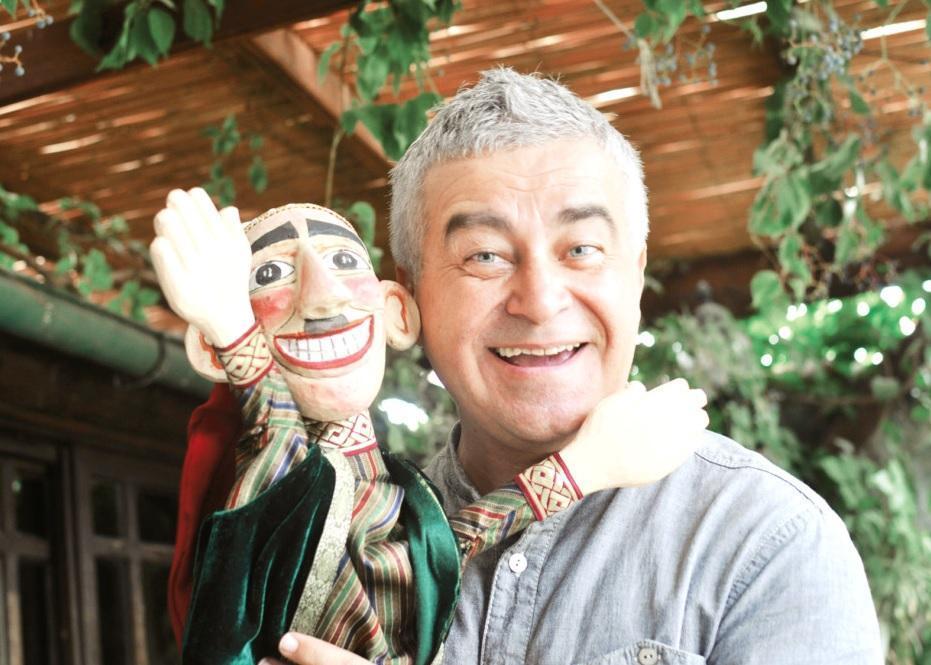
The founder of the Istanbul Karagöz Puppet Foundation and Karagöz shadow theater artist, Cengiz Özek, plans to establish a Karagöz museum and is currently working on creating a fund for it.
Speaking to state-run Anadolu Agency, Özek talked about his first meeting with Karagöz, the place of traditional Turkish theater in the international arena, and the Istanbul Puppet Museum, which he aims to establish.
At his workshop in Beyoğlu, Özek presents examples from the Turkish and international shadow and puppet theater to art lovers. He said that preparations continue for the establishment of the Istanbul Puppet Museum Theater.
Özek stated that when he was a secondary school student at the age of 13, he learned how to make Karagöz figures from his art teacher, adding, “I started working in the Karagöz Collection of the Yapı Kredi Museum to repair and examine the works. Later, I examined the Topkapı Palace Museum collection. I opened the first Karagöz figures exhibition at today’s Yapı Kredi Culture and Arts Center. This exhibition was bought by the Dutch National Museum, and my life changed after that.
Noting that it is possible to see very different Karagöz figures made by many artists in the Topkapı Palace Museum collection, Özek said that he opened his second exhibition at the age of 20 at the Topkapı Palace.
Stating that he made his professional show with the classic play “Stupid Watchman,” Özek said that when he saw the interest of people, he wanted to do something in this field, so he studied acting at university.
Speaking about how he started making puppet theater, Özek said, “I was performing for Turkish associations during my tours abroad, and I had the chance to watch the puppet theaters there. There are lots of puppet theaters abroad. I was seeing a lot of festival news and started sending letters to them. The first festival I attended was a one-man play festival in Poland. We received great interest there. Then we started getting invitations from all international festivals. And we decided to organize a puppet festival in Istanbul. We held the first festival in 1998, the International Istanbul Puppet Festival.”
Stating that the written history of Karagöz goes back to 1517, the artist said, “Some branches of arts were unfortunately eliminated or transformed by state officials during the transition from empire to the republic. For example, Karagöz was used by the community centers to explain the republic revolutions. This is a little-known thing about Karagöz. They were very didactic and I think it was one of the elements that destroyed Karagöz. Then a Karagöz that has lost all its features emerged.”
Karagöz will always create own audience
Emphasizing that the puppeteer should look at the puppet as a part of his or her own body, Özek stated that the art of puppet has an important place in the world.
Noting that he saw many different shadow plays in China, India, Indonesia, Taiwan, Thailand and Cambodia, Özek said, “Shadow play is an ancient tradition, especially in Asia. We can see the three-dimensional puppet in Europe as well, but we cannot say that it is very old. It doesn’t have a long history. Still, we are talking about a 300-400-year-old tradition. The aim of the festival we organized was to bring together the puppet tradition abroad and the Turkish puppet tradition. Here, we try to do this every year and we try to introduce the art of puppet to the world.”
Stating that they have performed shows in about 60 countries in five continents and in nearly 200 cities, Özek said that he opened 15 exhibitions abroad in Taiwan, Colombia, France, Germany, Hungary, and displayed Karagöz figures in countries such as Poland and Belgium.
Özek said that there are many puppet museums in the world, adding, “I thought: Why doesn’t Karagöz have a museum. I wanted to do it myself. That’s why I founded the Istanbul Karagöz Puppet Foundation. We are still trying to raise funds for this so that I think I can open a museum in a few years.”